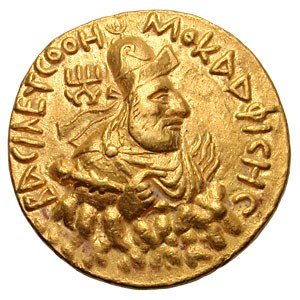ANCIENT INDIAN COINAGE
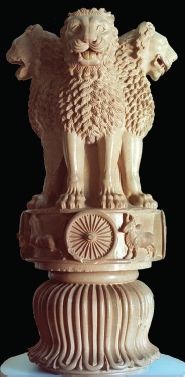
It is very difficult to know today where the concenpt of coinage first evolved, but based on available evidences, it appears that the concept of money as coins, which by definition here would be a piece of metal of defined weight stamped with symbol of authority for financial transaction, was conceived by three different civilizations independently and almost simultaneously. Coins were introduced as a means to trade things of daily usage in Greece (Archaic period), India and China in about 6th century BC. Most historians agree that the first coins of world were issued by Greeks living in Lydia and Ionia (located on the western coast of modern Turkey). These first coins were globules of Electrum, a naturally occurring alloy of gold and silver. These were crude coins of definite weight stamped with incuse punches issued by the local authorities in ~650 BC.
Most likely the first coins of India were minted just before 5th century BC in northern and central India. Both, literary and archaeological evidence confirm that the Indians invented the unique coinage, the punch-marked coins, somewhere between 6th to 5th century BC, free of any foreign influence. A hoard of coins discovered at Chaman Huzuri in 1933 contained 43 silver punch-marked coins with Athenian (coins minted by Athens city of Greece) and Achaemenian (Persian) coins. Bhir (Taxila) hoard discovered in 1924 contained 1055 punch-marked coins in very worn out condition and two coins of Alexander in mint condition. These archaeological evidences indicate that the coins were minted in India before 4th century BC, i.e. before Greeks advanced towards India (Alexander’s invasion of Persia and India).
Panini wrote Ashtadhyayi in 4h-5th century BC, in which he has mentioned Satamana, Nishkas, Sana, Vimastika, Karshapana and it’s various sub-divisions to be used in financial transactions. Thus, coins are known in ancient Indian literature from 500 BC. There is also a strong belief that silver as a metal which was not available in Vedic India (pre 600 BC), became abundantly available by 500-600 BC. Most of the silver came from Afghanistan and Persia (modern Iran) as a result of international trade, leading to formation of definite currency.
Earliest Coins of India:The Punch-Marked Coins
The earliest coins of India are commonly known as punch-marked coins. As the name suggests, these coins bear the symbols of various types, punched on pieces of silver of specific weight. Interestingly earliest Indian coins have no defined shapes and they were mostly uniface. Secondly, these coins lack any inscriptions written in contemporary languages and almost always struck in silver. These unique characters makes early Indian coins very different than their contemporaries in Greece. Many early historians believed that concept of coinage was introduced in India by Greeks. But, unlike Indian punch-marked coins, Greek coins had inscriptions, they were round in shape, were stamped on both the sides and minted using silver, electrum and gold too. Today we are certain that the concept of coinage was invented in India independent of foreign influence which imparted the unique characteristics to these punch-marked coins, not seen in any other coins of the ancient world.
Punch-marked coins are marked with 1-5 (and sometimes more) marks representing various symbols. Historian and numismatists, Spooner and Bhandarkar independently concluded that the punching of various symbols representing animals, hills, tree and human figures followed a definite pattern and these coins were issued by royal authority.
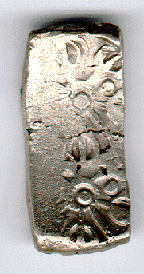
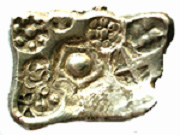
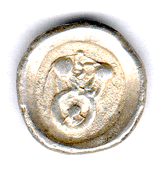
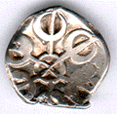
In Rig-Vedic period (Rig Veda is the first out of the four Vedas, which contains scriptures and hymns in Sanskrit, probably composed in 8th-10th century BC), many small kingdoms came into existence all over the Indian subcontinent, from Kabul (Kubha in Sanskrit) to upper Ganga (Ganges) valley. Most of these were the small states under hereditary monarchs and few republics. These small and large states called Janapadas and Mahajanapadas. About 6th century BC, sixteen Mahajanapadas or kingdoms rose to pre-imminence in India. According to ancient text Anguttara Nikayas they were as follows: Anga, Magadha, Kashi, Koshala, Vajji, Malla, Vatsa, Chedi, Kuru, Panchala, Matsya, Surasena, Ashvaka, Avanti, Gandhar and Kamboja. One of the earliest coins of India were minted by following Mahajanapadas.
Ganga River valley: Kashi, Koshala, Shakya, Brij (?)
Upper Ganga river valley: Kuru-Panchala
Indus river valley: Takshashila (Taxila) & Gandhara (Pushkalavati)
Southern India (Godavari and Narmada river vallys): Ashmaka or Ashvaka, Kuntala and Avanti
Each of the kingdom have issued distinct type of silver coins to facilitate the trade. Shown above are some of the earliest coins of Indian subcontinent. The Shakya Janapada coin was found near Narhan village in Uttar Pradesh state, located near Gomati river, a tributary of Ganga. This rectangular coin, made of almost pure silver, has seven distinct punch marks including central `pentagon enclosing a sphere’ punch mark. We have performed surface electron microscopy on this coin, which indicates that the central mark was punched last. None of those marks show much resemblance to punch marks routinely seen on coins of other Janapadas. Three other punch-marked coins of India minted by Taxila (Takshashila), Koshala and Ashmaka Janapadas are also shown.
About 600 BC, in north western part of India, Takshashila and Pushkalavati, became important commercial centers for the trade with Mesopotamia. These wealthy satrapies (provinces) introduced a unique coinage to facilitate the trade. These were silver concave bars of 11 gms, which are popularly called as `Taxila bent bars’ or `Satamana bent bars’. Satmana or Shatamana represented 100 rattis of silver in weight (Shata means 100, mana means unit). These silver bars were punched with two septa-radiate (seven arms) symbols, one at each end. These bent bars represents one of the earliest coins of India. Shown above is a fine example of Satamana bent bar.
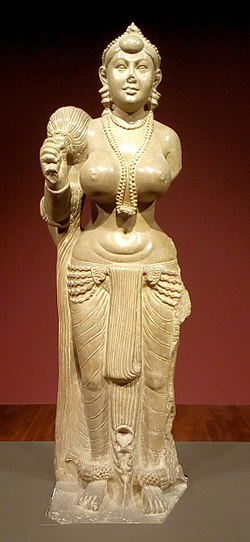
Ancient Indian coinage was based on `Karshapana’ unit that consists of 32 rattis (3.3 grams of silver). A `Ratti’ is equivalent to 0.11 gms which is the average weight of a Gunja seed (a bright scarlet colored seed). Subsidiary denominations of Karshapana like half Karshapana (16 ratti), quarter Karshapana (8 ratti) and 1/8 of Karshapana (4 ratti) were also minted. Shown above is a fine example of 1/8th of Karshapana, which is as usual uniface. On obverse is septa-radiate single punch (identical to what is seen on two ends of Satamana bar).
Shown above is a beautiful example of one of the earliest coins of India minted by Ashmaka kingdom of Deccan (modern Maharashtra) and southern India. Recently, it has been attributed to Kuntala Janapada. This coin which is considered as double Karshapana, has also been suggeted to be half Shatamana.
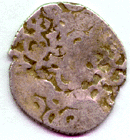

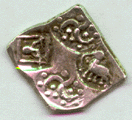
Magadh
Most of these Janapadas were subsequently absorbed into Magadha Kingdom (ruled by Saisunaga dynasty) between 600-321 BC. Pradyotas of Avanti were defeated by Saisunaga in 400 BC. The most remarkable king of Magadha was Bimbisara (also called Shrenika) who ascended on throne in 545 BC. He annexed kingdom of Anga (east Bihar) and married princesses of Koshala and Vaishali thereby expanding his kingdom to the borders of Nepal. He was a very efficient administrator and built the city of RajGriha (Rajgir in Bihar state). Both, Goutam Buddha and Mahavir Jain preached their doctrines during his reign. His son Ajatshatru (494-462 BC) defeated many of his adversaries including humbling his uncle Presanjit of Koshala. He founded the city Pataliputra (modern Patna), which was metropolis of ancient India for next four centuries.
In ancient India during 600-321 BC, many Janapadas issued coins with only one symbol like Lion (Shursena of Braj), humped bull (Saurashtra) or Swastika (Dakshin Panchala). Four symbol coins were issued by Kashi, Chedi (Bundelkhand), Vanga (Bengal) and Prachya (Tripura) Janapadas. Five symbol punch marked coins were first issued by Magadha which were continued during Mauryan expansion. Shown above is a coin of Kalinga Janapada.
Ajatshatru was followed by many kings who eventually lost this kingdom to the family of Nandas. To maintain the huge army of 200,000 infantry and 3000 elephants (supported by Greek evidence), Nandas had to resort to heavy taxation, which was detested by people. A new leader emerged, Chandragupta Maurya (321-297 BC), who eventually with the help of Taxilian Bramhin, Kautilya or Chankya overthrew the Nanda ruler and laid the foundation of illustrious dynasty of Maurya.
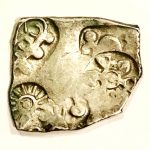
MAURYAS, THE FIRST EMPERORS

Most likely, emperors of Maurya dynasty ruled the largest empire that ever existed in the Indian subcontinent. Soon after the death of Alexander, his empire was divided among his generals. One of his general Seleucus assumed the title of King in 312 BC. He invaded India but was repelled by Chandragupta Maurya. It is likely that Chandragupta and Seleucus developed mutual respect for each other leading to Seleucus surrendering a part of Gandhara (modern Afghanistan and Pakistan) and giving his daughter (or sister?) to Chandragupta in marriage. Seleucus sent an ambassador named Magasthenes to Chandragupta’s court, who has written detailed account of might and pomp of Mauryan empire. Chandragupta (according to Jain scripture became the Jain monk and spent his last days at Shravan Belagola in southern India) was followed by his son Bindusara who increased his empire by annexing Deccan (modern Maharashtra and Andhra/Telangana), the south India.
His son Ashoka seized Pataliputra after his father’s death and enthroned himself as emperor. Ashoka is the greatest emperor of Muaryan dynasty and most certainly one of the greatest figure in the Indian history. He was an ambitious ruler who annexed a large part of southern and eastern India, including the kingdom of Kalinga (modern Orissa).
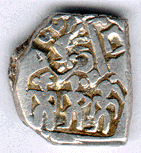
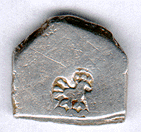
Mauryan Empire (Ashoka the great)
272-232 BC
Silver Karshapana, 3.35 gm (32 Rattis)
Obverse: 3 deities (Kartikeya) and peacock
Reverse: Peacock on hill
Reference: GH#590-591, Series VII; MAC#4245
Rare (rare to see deities on punchmarked coins)
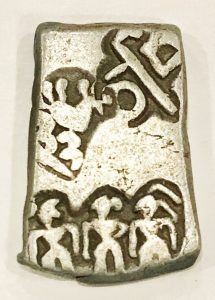
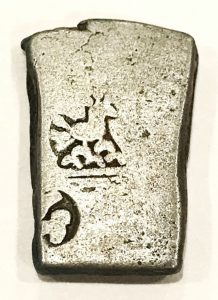
Shown above is a an interesting silver Karshapana (mentioned in ancient Sanskrit treatise Manusmruti being 32 rattis in weight) minted by Mauryan authorities. It is very rare to see any human figure or deities on punch-marked coins. Two coins shown above and one coin shown below are some of the rare coins. The most striking feature of two above punch-marked coins is presence of 3 deities, struck from single punch. Considering that reverse of both of these coins have peacock, which is a vehicle of god Kartikeya (son of Lord Shiva), scholars think these represents three forms of Kartikeya (Skanda, Kumara & Vishakha).
The coin shown below has a single punch-mark of the person. It is believed to be one of the earliest depiction of Lord Shiva (in Mahakal form). Shown on right, the punch-mark of Sun, which was symbol of the Mauryan Dynasty.
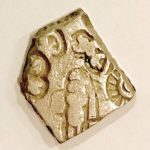
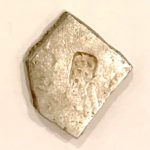
Mauryan Empire (Ashoka the great)272-232 BCSilver KarshapanaObverse: Deity, Shiva (?) Standing, Sun and 4 other punchmarksReverse: A single punchmarkWeight: 3.35 gm (32 rattis)Reference: MAC 4178, GH#566Rare (rare to see deities on punchmarked coins)
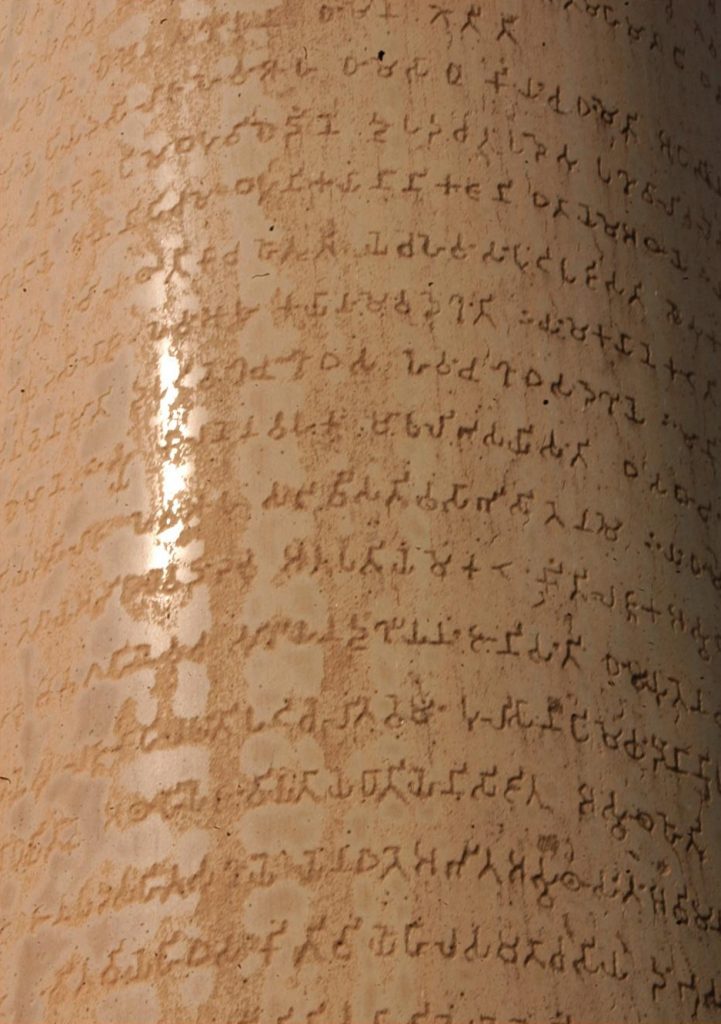
During Ashoka’s reign, the Mauryan empire reached zenith covering an area from modern Afganistan in west to Assam in east and in north from Himalayas to modern Andhra Pradesh in southern India. These imperial punch marked coins have been discovered in all the regions which cover modern India, Pakistan and Afghanistan, truly representing the glory of the mighty Mauryan empire. Although, Kalinga war proved to be turning point and produced far reaching consequence in the history of India and whole eastern world. Ashoka came under influence of Buddhist philosophy and later sent his son (or brother?) Mahendra to Sri Lanka, where king Devanampiya Tissa and eventually the entire island embraced Buddhism. Later, Buddhism spread to large part of Asia (China, Bhutan, Mongolia, Japan, Korea and Taiwan) and south-east Asia (modern Myanmar/Burma, Combodia, Laos, Thailand, Vietnam and Singapore). Even today, majority of population in these countries follow Buddhism.
Emperor Ashoka drew up a code of laws noted for their humanity and erected hundreds of stone pillars and magnificent Buddhist Stupas (dome shaped monuments). It is believed that Ashoka erected almost 85,000 stupas and pillars, all carved in stone with teachings of Buddhism engraved on them. After two thousand years, we can still see ruins of them in most states of India including Gujrat, Uttar Pradesh, Bihar, Madhya Pradesh, Andhra/Telangana, Tamilnadu and Northwestern India (modern Pakistan). Ashoka’s Eddicts, carved on pillars and rocks, form the earliest known epigraphs in the subcontinent. These pillars are made out of shafts of sandstone and display Buddhist symbols such as the wheel and the lion. These pillars and capitals on top of them are some of India’s earliest major stone sculptures.
The statue of Yakshini (shown above), excavated on banks of river Ganga at Didarganj, near Patna, Bihar, is considered one of the greatest examples of Mauryan art. A life-size, tall, well-proportioned, highly polished sculpture reflects the artistic sensibility of the Mauryan period. This Chauri Bearer is carved out of a single piece of stone, Chunar Sandstone in 1st century BC.
The great Stupa at Sanchi is perhaps the finest surviving relic of the Mauryan empire. This great stupa is 54 feet in height and surrounded by exquisitely carved stone railings and four gateways. These elaborately carved gateways depicts events in life of Buddha and also lifestyle of people of that era. A famous Lion-Capital (four-lion pillar which is shown above) gleams in polished white sandstone realistically represents the artistic achievements of Indian artists and patronage of their masters. This Lion-Capital that Ashoka erected at Sarnath (in modern Madhya Pradesh state) has become the national emblem of modern republic of India. All the coins and currency notes of modern India have this four-lion symbol on it.
The Mauryan Empire is famous for its great achievements in art, culture architecture and literature. The classics of Indian literature, such as the Arthashastra of Kautilya (a treatise for kings about ruling a state) and the famous Kama Sutra by Vatsayan were written during Mauryan reign.
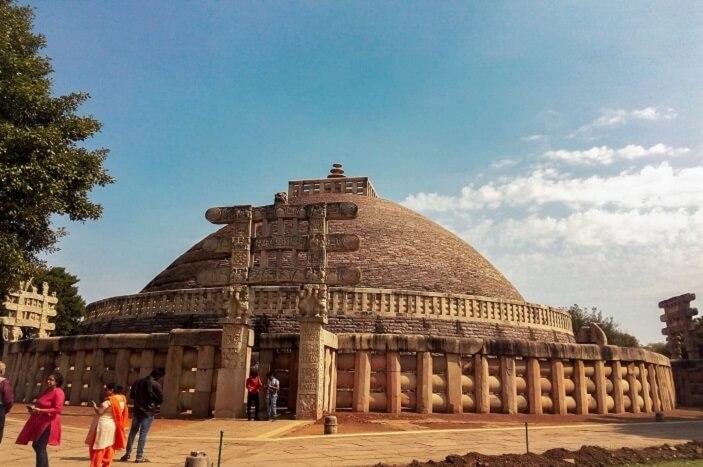
POST-MAURYAN PERIOD

